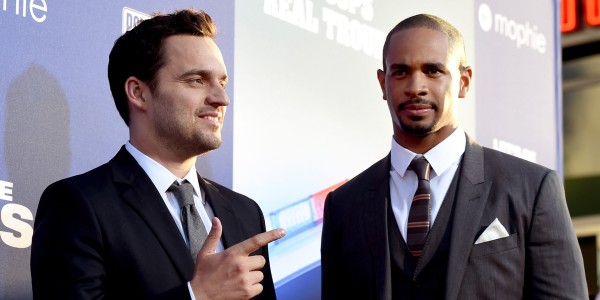There are a lot of reasons why reality shows are fond of producing all-star seasons, when they bring back past contestants for another chance at a prize.
And there are a lot of reasons why this is often a terrible idea.
For its 20th season, "Survivor" is reuniting 20 contestants, organizing them into tribes of "heroes" and "villains." That division clearly illustrates why all-star seasons work: Viewers already like or loathe contestants, and so some people will tune in to root for their favorites again and/or to hate on their least favorites.
Because returners are familiar, there's no learning curve for fans who already know everyone's names. Just like book seven of Harry Potter didn't need to explain who he is, detailed introductions aren't necessary, although "Survivor" will surely include reminders — especially for those few contestants who are less than memorable. (Hello, Danielle and Candice.)
For the most part, though, fans pick up where they left off, ready for more delusional grandstanding from Coach, jovial pirate antics from Rupert, flirty strategizing from Parvati, niceness from Tom and more evil from Russell.
Becoming self-awareJust as viewers know what to expect, reality show contestants who return are often more self-conscious because they've already seen themselves on TV and are aware of everything from how the game is played to how the show is produced and edited. (That's true of everyone on "Survivor: Heroes vs. Villains" except for Russell Hantz; "Survivor: Samoa" hadn't yet debuted when season 20 began production.)
Because of that self-awareness, they're likely to be one of two things: a more extreme version of themselves, giving viewers what they assume viewers want, or a more timid, self-conscious version.
Neither really works, and both are ultimately disappointing.
Consider the last full "Survivor" all-star season, when Sue Hawk freaked out and left after an encounter with a naked Richard Hatch, both of them acting like strange versions of themselves.
In Micronesia, the season that featured half all-stars and half fans, notorious villain Jon "Jonny Fairplay" Dalton basically quit by asking his tribe to vote him out first.
Going to extremesBy casting a group of mostly extreme personalities for "Survivor Heroes vs. Villains," producers are trying to ensure fireworks for the 20th season. But by labeling the cast, they're also encouraging them to live up to their reputations in an even more extreme way.
Slideshow 26 photos
Celebrity Sightings
There will be conflict, and it may be entertaining, but how real will it be? If someone has grown or changed beyond their status as a villain, for example, will the editors be forced to make that person into a villain anyway? Or will it be more compelling television to show that change?
The show seems to be leaning toward making sure everyone is exactly like they're remembered. Producers even select clothing for the contestants. Candice told me producers want her to have an "athletic look" and are forcing her to wear a sports bra and pink clothes.
A different advantagePerhaps most significantly, "Survivor" is a completely different game when contestants know each other. Besides the potential advantage that comes with being able to watch their competitors play the game (which, of course, is what athletes do all the time), "Survivor" all-stars have an entirely different kind of advantage.
That's because many of them are already friends. Whether they met while playing during a previous season or at a charity event, they already have relationships, and a big part of the fun of "Survivor" is watching relationships form — and crumble when one person stabs the other in the back.
"Survivor" is a social and strategic game set in an extreme environment, and ever since Richard Hatch introduced the idea of aligning in small groups, alliances have been a huge part. But instead of forming organically, alliances in all-star seasons are sometimes established before it even starts. For example, in a pre-game interview, Sugar told me she has alliances with three men, and she even has a romantic relationship with one of those people.
None of that will end up on TV, so viewers will get a distorted perspective. And the real magic of "Survivor" is watching 16 or 18 (or even, in the more bloated seasons, 20) Americans be forced to create new relationships as they battle for $1 million.
This is the second time "Survivor" has done a full all-star season, but just two years ago, on "Survivor Fans vs. Favorites," half of the cast consisted of returning contestants. Besides the fact that the fans were somewhat weak as a tribe, the favorites didn't do much, either — at least until the tribes merged and an alliance started blindsiding people left and right, making for exceptional television. But for a while, the favorites didn't make for great TV.
Nine of the 20 contestants this season will be on "Survivor" for a third time, and this is Rob Mariano's fifth chance to win $1 million on a CBS reality show. That's nothing compared to the "Real World/Road Rules Challenge" veterans who've made their drunken, violent appearances on that show into their full-time careers, but for a show that finds so much entertainment and drama from unknown people, it's still too much.
is a writer, TV critic and editor of reality blurred. Follow him on and .
